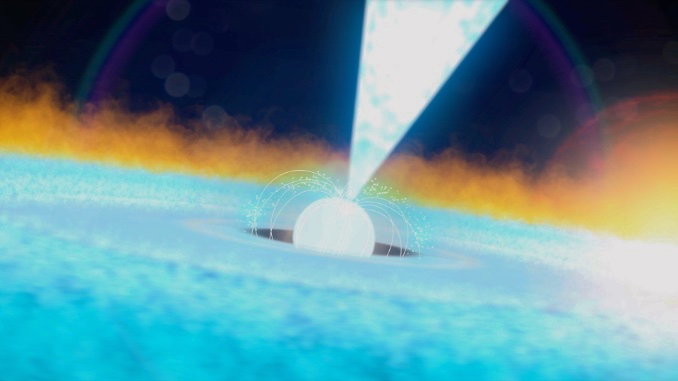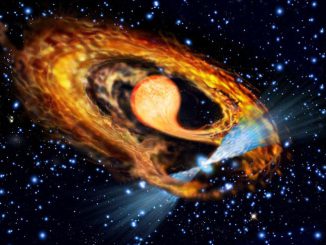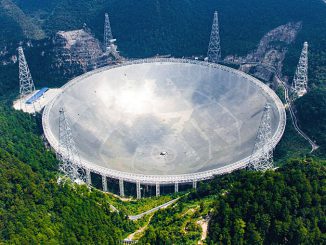
The Neutron styar Interior Composition Explorer – NICER – telescope array aboard the International Space Station has captured a brilliant burst of X-rays caused by a titanic thermonuclear blast on the surface of a spinning pulsar that released as much energy in 20 seconds as the Sun does in nearly 10 days.
“This burst was outstanding,” said lead researcher Peter Bult, an astrophysicist at NASA’s Goddard Space Flight Center and the University of Maryland. “We see a two-step change in brightness, which we think is caused by the ejection of separate layers from the pulsar surface, and other features that will help us decode the physics of these powerful events.”
The Type 1 X-ray burst was detected on 21 August from an object catalogued as SAX J1808.4-3658, or J1808 for short, located some 11,000 light years from Earth in the constellation Sagittarius. The collapsed remnant of a once massive star, J1808 spins 401 times per second in a binary system that also includes a brown dwarf.
Gas pulled in from the brown dwarf – a body larger than a planet but not massive enough to support nuclear fusion – spirals into an accretion disc around the pulsar. Every few years, that disc becomes so dense the gas is ionised and eventually spirals inward, falling onto the pulsar’s surface.
At the base of the hydrogen “sea” that forms, temperatures and pressures can climb to the point that fusion begins, generating helium nuclei.
“The helium settles out and builds up a layer of its own,” said Goddard’s Zaven Arzoumanian, NICER deputy principal investigator and co-author of a paper in The Astrophysical Journal. “Once the helium layer is a few metres deep, the conditions allow helium nuclei to fuse into carbon. Then the helium erupts explosively and unleashes a thermonuclear fireball across the entire pulsar surface.”
As the burst detected by NICER proceeded, the X-ray intensity levelled off for nearly a second before climbing again at a slower pace. This stalling may represent the moment when the hydrogen layer was blown away into space. The outburst continued for another two seconds and reached its peak as the more massive helium layer was blown away.
The helium racing away from the pulsar caught up with the hydrogen layer, slowed and then settled back to the surface. The pulsar brightened again by about 20 percent, but it’s not yet known why.



